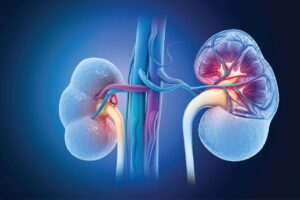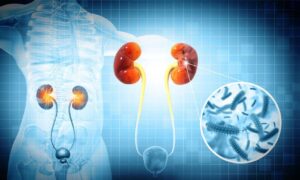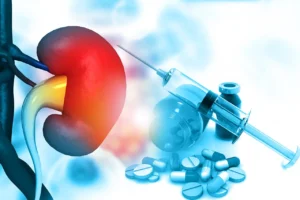The study by Lee et al., published in Clinical and Molecular Hepatology, offers important insights into the long-term risks of chronic kidney disease (CKD) and end-stage renal disease (ESRD) among liver transplant (LT) recipients. With a particular focus on tacrolimus intrapatient variability (IPV) and its impact on post-transplant renal outcomes, the research addresses a growing clinical concern as the burden of CKD rises in this vulnerable population. The study’s longitudinal approach strengthens the understanding of how immunosuppressive management influences renal health over time. Nevertheless, the findings raise several questions regarding generalizability, mechanistic clarity, and the influence of confounding factors.
One of the primary limitations lies in the single-center design, as the study draws exclusively from a tertiary hospital cohort in South Korea. This restricts the ability to extrapolate the findings to more diverse populations, especially in regions with differing epidemiology of liver disease and healthcare infrastructure. Additionally, while the authors stratify patients based on glomerular filtration rate and presence of acute kidney injury (AKI) at transplant, they do not fully explore the severity or reversibility of AKI—an omission that may obscure the nuanced effects of early renal insults on long-term outcomes. Patients with transient AKI may follow different trajectories compared to those with sustained kidney damage, but this distinction is not clearly addressed.
The role of tacrolimus IPV as a risk factor for CKD and ESRD is another key finding. However, the study leaves unanswered questions about the sources and implications of IPV. Although higher variability in tacrolimus levels is associated with worse outcomes, the reasons behind this variability—whether pharmacokinetic, such as genetic polymorphisms in CYP enzymes, or clinical, like inconsistent dosing or drug interactions—remain undefined. This ambiguity limits the translation of findings into clinical practice, particularly when it is unclear whether reducing IPV is an actionable and effective strategy. Without clarity on whether IPV is a modifiable risk or a surrogate marker for other underlying issues, its value in guiding treatment decisions remains uncertain.
Moreover, the study’s median follow-up period of eight years, while commendable, may still fall short of capturing the full impact of tacrolimus exposure on kidney function. CKD progression can be insidious, influenced by cumulative drug toxicity, underlying fibrosis, infections, or even cancer development. The observational nature of the study also precludes establishing causality—highlighting the need for randomized controlled trials to determine whether high tacrolimus levels or IPV directly contribute to renal decline. Confounding by indication and other comorbidities, such as diabetes, may also distort the observed associations.
The study also underscores the role of tenofovir disoproxil fumarate (TDF) in contributing to CKD among hepatitis B virus-infected LT recipients. While consistent with findings in non-transplant populations, the retrospective design weakens the ability to establish causality or examine the dose-response relationship. TDF’s effects could differ in LT patients due to concurrent immunosuppressive therapy, and the study does not account for alternative antivirals or the impact of long-term viral suppression and resistance.
Lastly, while the study identifies key clinical risk factors such as diabetes mellitus and tacrolimus dosing adjustments, it does not fully consider unmeasured variables like medication adherence, varying post-transplant care practices, or the use of emerging immunosuppressive alternatives like mTOR inhibitors. These omissions, along with the reliance on retrospective medical record data, may introduce biases and limit the applicability of the findings to broader clinical settings.
In conclusion, Lee et al.’s study provides valuable data on the renal risks faced by LT recipients, particularly in relation to tacrolimus exposure and variability. However, its limitations call for cautious interpretation and underscore the need for further prospective, multi-center studies that can clarify mechanisms, guide individualized therapy, and ultimately improve renal outcomes in this complex patient population.
References
1.Lee SK, Choi HJ, You YK, Sung PS, Yoon SK, Jang JW, et al. Optimal tacrolimus levels for reducing CKD risk and the impact of intrapatient variability on CKD and ESRD development following liver transplantation. Clin Mol Hepatol. 2025;31:131–146. doi: 10.3350/cmh.2024.0451.
2.Miedziaszczyk M, Idasiak-Piechocka I. Safety analysis of co-administering tacrolimus and omeprazole in renal transplant recipients – a review. Biomed Pharmacother. 2023;166:115149. doi: 10.1016/j.biopha.2023.115149.
3.Destere A, Premaud A, Monchaud C, Marquet P, Woillard JB. Longitudinal exposure to tacrolimus and new-onset diabetes mellitus in renal transplant patients. Ther Drug Monit. 2023;45:102–109. doi: 10.1097/FTD.0000000000001035.
4.Morsy KH, Mekky MA, Abdel Malek MO, Abbas WA. Incidence, causes, and outcomes of renal failure among cirrhotic patients. Turk J Gastroenterol. 2015;26:517–521. doi: 10.5152/tjg.2015.15169.





